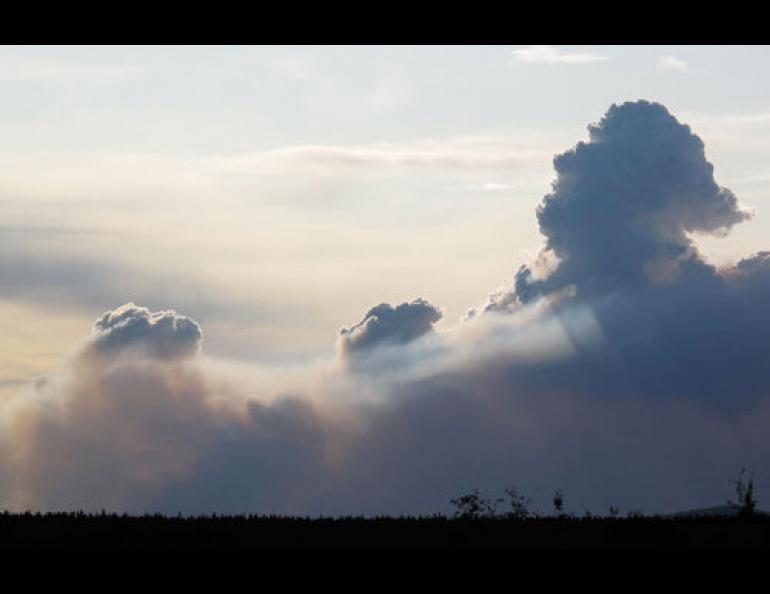
Above-average fire year follows lean years
As I sit typing this column, I smell smoke. The molecules of fire-killed black spruce trees and tundra plants have wafted from a mushroom cloud on the Tanana Flats into the buildings on the campus of the University of Alaska Fairbanks. With three quiet fire years behind us, 2009 is a noticeable fire year.
“This one was late starting, but it’s already above average,” said Michael Richmond, Fire Weather Program Manager of the National Weather Service in Fairbanks. Richmond’s office is a floor above mine, and it, too, smells like a campfire. “The average acreage burned from 1955 to 2008 is about 910,000 acres (per year), and today (July 27, 2009) we’re at 1.6 million acres.”
That’s more acres than St. Lawrence Island, and more than Baranof Island. It’s more land area than Delaware. It’s like 90 flaming Manhattans, and the acreage will probably be greater than Kodiak Island and its 2.3 million acres before the fire season is over.
“Every day, we’re burning up at least 100,000 acres (the area of San Francisco) or more,” Richmond said. “Basically, we need rainfall or higher humidities.”
Richmond said that the computer models the National Weather Service forecasters use show no letup in a “high-pressure ridge,” which is a stretched-out region of high atmospheric pressure that tends to keep the weather warm and dry in Alaska’s Interior. Most of Alaska’s wildfires happen here because the Interior is the warmest part of the state, it hosts many flammable plants, and the region absorbs as many as 7,000 lightning strikes on the hottest days.
“(Big fires happen) when temperatures are warm enough, and we have low enough humidity,” Richmond said. “We always have the lightning.”
Early- and mid-July are fertile times for fire, Richmond said, because temperatures can remain high and humidity can remain low for as many as 15 hours each day, nurturing fires. When night returns to the Interior, fires don’t have ideal conditions.
“By the time we get to late August, the burning period is only about three hours,” Richmond said.
While this will be a large fire year, it will probably not be as intense as 2004, when acreage the size of Vermont burned in Alaska and some people wore surgical masks while walking down Cushman Street in Fairbanks. Fewer people remember 1935, when a single fire burned 1.9 million acres near Lake Illiamna, or 1915, when sparks from a train rolling through Chitina kicked up a fire that burned about 400,000 acres there. In 1926, some kids near Fairbanks wanted to flush a squirrel from a spruce tree by setting the tree ablaze. They succeeded, and also burned 38,000 acres near town.
Though 2009 could be a historic fire year, similar years have happened in the past, as almost all of Alaska that can burn, has burned. The boreal forest seems as if it was designed to burn, and the ecosystem would not be healthy without forest fires. More frequent extreme years may be linked to manmade climate warming, but for now that is just a theory.
“These kinds of years happen anytime,” Richmond said. “There is no overall explanation other than to say it’s just part of the natural climate process. Our fire seasons are driven by high-pressure ridging episodes bringing warmth and dry spells. The more of them we have, the more fire we get.”





